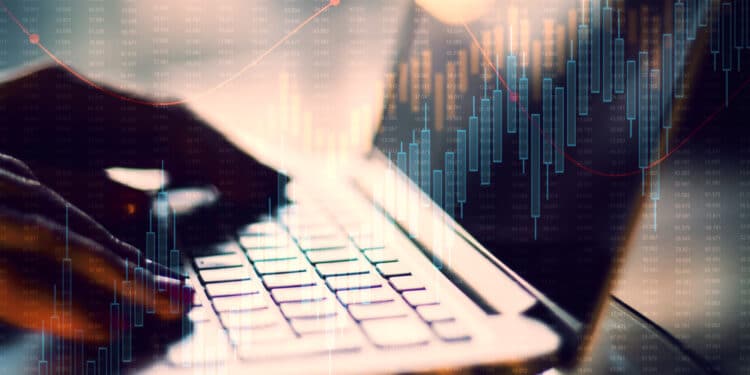Many traders are aware of the concept of backtesting their trading technique, but forward testing is typically overlooked. Traders who are eager to test a trading idea in a live market sometimes make the error of relying solely on backtesting data to assess whether or not the method is lucrative.
Backtesting can give traders useful information, but it can also be misleading, and it is only one component of the evaluation process. Forward testing gives additional assurance of a system’s efficacy before using real trades. It is critical to have a good correlation between backtesting and forward testing findings when establishing a trading system’s viability.
Backtesting
Backtesting, as the name suggests, is using historical data to see a system’s functionality and viability. This is by finding out when a system would have gotten in and out, bought and sold, been stopped, and other factors. An investor can compile all of the different trades and calculate how much the system would have made and lost month by month, year by year – and then calculate the statistics such as annual return, maximum drawdown, volatility, and so on that we all use to gauge a model’s abilities by running the system backward in time.
Backtesting steps
- Define the framework of the strategy.
- Indicate the financial market and chart time frame that will be used to test the approach.
- Start looking for trades using the given technique, time frame, and strategy.
- Examine price charts for potential entry and exit points. This can be repeated until all trades on the chart up to the present moment have been identified.
- To calculate the gross return, keep track of all the deals and add them together. This should contain both successful and unsuccessful trades.
- Deduct any fees and trading costs associated with the trades from the gross return to get the net return. The profit or loss over the defined duration is the net return.
- Compare the net return to the capital required to conduct the transactions to find a percentage return over the entire period.
One can repeat the steps for better results or if you want to look at any other strategy. Calculate the risk/reward ratio for all the trades to see the strategy’s viability.

You can draw a table to put your results. Above is an example of such.
Automatic vs. manual backtesting
For manual backtesting, you can use a spreadsheet app. TradingView is one of the best
charting applications one can use, but it might limit some information on some forex pairs. You can use the steps stated, but they can change depending on the option you choose. For Adara and TradingView, you look for past prices to identify the setup visually.
The indicators in the applications, for example, Simple Moving Average, Bollinger Bands, Relative Strength Index, and Fibonacci retracement, can be backtested manually. In a simple Moving Average, for example, you can input the lengths of two Moving Averages. You can use the 200-day Simple Moving Average and 25-day Moving Average that is put in the system and backtest. By doing so, you will find which performed best in a period of time.
You can also use Excel to backtest manually. Here, you have to get the data first and ensure that it is authentic. You can use data from different platforms, for example, charting applications, Yahoo, and Finance. You can then use Excel Formulas and the data to create your own indicators. Afterward, come up with your own trading rule. Test the rule by applying a signal, exit point or entry point, etc.
For automatic backtesting, you come up with a program that exits and enters trades automatically for you. You can buy or rent these programs. The environment in a first-class programming language has the most flexibility.
Before employing a system, you have to be sure the past way it performed must be as close as possible to how it will perform in the future. Event-driven backtesting and Research backtesting are two forms of backtesting to test the hypothesis.
Forward testing
It is also called paper trading. Traders can use forward performance testing to analyze the system using a different set of sample data. It is a simulation of actual trading that entails evaluating the logic of the system in a live market environment. You can use it on a live or a demo account for forward testing. Use a spreadsheet to track your results.
There are also automated tracking systems, for example, MyFxBook, which is easy to use and free.
To journal your trades, you can use a notebook, online journal, or video journal. After coming up with the data, you need to analyze it and look for improvements. There are factors that make the results not to be the same. For instance, market conditions could change, or the period you backtested was not long enough.
Brokers provide a simulated trading account for forward testing. Here you can place trades and calculate your profits and loss. This account can be used to provide a more realistic environment to practice trading and evaluate the system.
Before verifying a system using backtesting, it is important to do forward testing. This is because backtesting has its own issues that can make the system not to be authentic. One of the primary issues is that you might refine the variables excessively, changing them to the maximum, and build a system that is very particular for the historical data but fails to account for the variability of future price movement.
Conclusion
Backtesting is when we apply a trading strategy to a defined collection of historical data with the express intent of determining the trading strategy’s performance. Forward testing is when we test a trading strategy in a simulation of actual trading or when you “paper trade” under the trading plan’s conditions. It is important to backtest and then forward test a system for better, authentic results.




